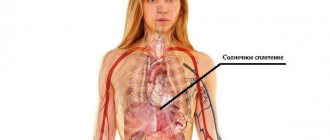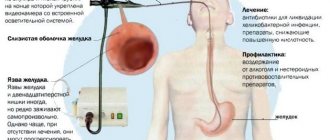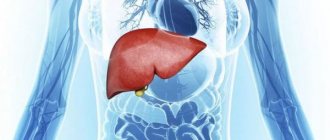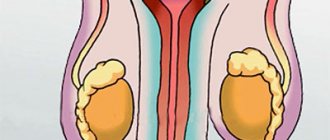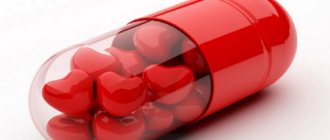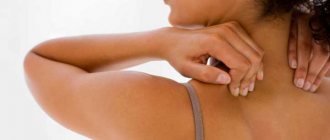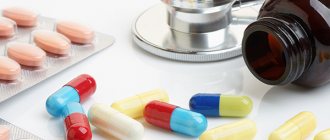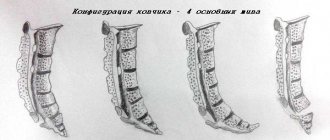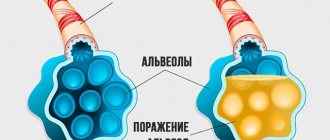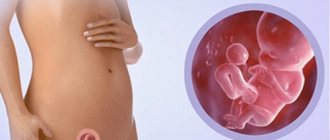- How to understand that it is the heart that hurts?
- Symptoms of heart pain depending on the disease
- Heart-like pain
- What to do?
Many people often attribute chest pain to heart problems, but this is not always the case. Often, certain diseases of the digestive and respiratory systems, musculoskeletal system, various injuries and neurological disorders manifest themselves in this way.
Angina pectoris
How does heart pain manifest itself in the form of an angina attack:
- The pain with this pathology is squeezing, pressing, and sometimes burning. It is worth noting: breathing or changing the patient’s body position will have virtually no effect on the intensity of the pain.
- Angina pectoris will manifest itself when a person is physically and emotionally stressed. Although it can also happen at rest, even during sleep, it is less common.
- When inhaling, colitis in the region of the heart.
- Duration ranges from 2 to 15 minutes.
- Localized in the retrosternal region, sometimes it “radiates” to the arms (usually to the left), but not always; irradiation may well be to the back, neck, and also the lower jaw.
What pathologies can pain indicate?
Pain in the heart area can indicate many pathologies. Cardiac ones include:
- ischemia (angina pectoris, rhythm disturbance, myocardial infarction, post-infarction cardiosclerosis);
- inflammation of the myocardium, with disruption of the basic functions of the muscle: excitability, conductivity and contractility;
- myocardiopathy;
- myocardial dystrophy;
- heart injuries;
- neoplasms.
Pathologies manifested by heart pain:
- esophagitis;
- gastroesophageal reflux pathology;
- stomach ulcer;
- malignant neoplasms;
- chemical burns of the mucous membrane of the esophagus, stomach;
- Mallory-Weiss syndrome, accompanied by gastric bleeding;
- perforation of the ulcer;
- pneumonia;
- pleurisy;
- tuberculosis;
- pneumoconiosis;
- aneurysm or dissection, congenital narrowing of the aorta;
- pulmonary artery thrombosis, etc.
Only a specialist can make the correct diagnosis after a detailed diagnosis.
Pericarditis
Pericarditis has the following symptoms of heart pain:
- With pericarditis, the pain is sharp and dull of varying intensity.
- It does not increase immediately, but gradually, at the peak of the process it can decrease and even disappear, but then it intensifies again. Often changes are associated with the patient’s body position and breathing.
- Duration is several days.
- Localization will be in the retrosternal region, sometimes radiating to the neck, back, and also to the shoulders and epigastric region.
Diagnostics
After collecting disturbing symptoms, the doctor will send you for the following examinations:
- Blood analysis.
- ECG.
- Ultrasound of the heart.
- X-ray of the chest organs.
- Duplex scanning of the aorta.
To diagnose gastrointestinal diseases, you may need fibrogastroduodenoscopy (FGDS) - swallowing a probe.
Aortic dissection
Aortic dissection manifests itself with the following symptoms of heart pain:
- The pain is very intense and often comes in waves.
- The onset is immediate, often against the background of arterial hypertension, sometimes during physical and emotional stress. There may also be the presence of neurological symptoms.
- Duration with a very wide range, can be from several minutes to several days.
- Localization in the retrosternal region with “recoil” along the spinal column and along the branches of the aorta (to the stomach, back, neck and ears).
Heart attack
A heart attack is one of the most common causes of chest discomfort. The definition is collective in nature, describing the acute state of various heart pathologies. For example, an acute lack of oxygen to cardiac tissues, as a result of which ischemia develops, and then necrosis.
The main signs that the heart hurts are:
- Pressing pain. With such pain, it is difficult to describe exactly where it hurts, because the discomfort radiates to the arms, neck, back and lower jaw. The condition is especially pronounced on the left side of the body.
- Discomfort occurs after physical or psycho-emotional overload. The pain is relieved with nitroglycerin or goes away on its own.
- The condition is accompanied by shortness of breath, profuse sweating and vomiting. Shortness of breath can occur even at rest or with minor exertion.
- Against the background of chest pain, fatigue, tiredness or sleepiness appear.
- In rare cases, chest discomfort is accompanied by impotence. This occurs due to blockage of the main vessels.
- Development of edema throughout the body. This criterion is the main sign that it is the heart that hurts. Most pronounced on the lower extremities and facial area.
- Morning time of day. At this time, pain caused by cardiac ischemia and high blood pressure is most often observed.
- A short-term cessation of respiratory activity during sleep, accompanied by constant chest pain, indicates a cardiac etiology of discomfort.
If a person discovers one of these signs, it is recommended to immediately consult a doctor. A specialist will be able to find out what exactly caused the pain and how to deal with it.
TELA
How to determine heart pain during pulmonary embolism (PE):
- The pain is acute and intense, there is a high probability of developing shock, which occurs against the background of very pronounced shortness of breath.
- It appears suddenly, and against the background of a long period of bed rest, after surgery on the organs of the abdomen, pelvis, and lower extremities. In people suffering from thrombophlebitis, also during physical activity.
- Duration ranges from 15 minutes to several hours.
- When inhaling, colitis in the region of the heart.
- Localized in the center of the sternum or mainly in the left and right half of the chest, here everything depends on the side of the lesion directly.
Remember that, despite progress in medicine, heart disease occupies one of the leading positions in mortality (according to WHO). Therefore, carefully monitor your health and do not neglect contacting specialists. Remember that procrastination and self-medication can be fatal.
How to understand that your heart hurts
When pain occurs in the heart area, it is extremely important to determine the cause in order to provide proper first aid. The most dangerous pathology leading to discomfort in the chest area is associated with disruption of the cardiovascular system.
To determine real heart pain, it is enough to perform a few simple manipulations, which will most likely indicate whether the discomfort is associated with heart pathology.
The first thing to do is to understand whether there is a dependence of pain on the position of the body, whether it intensifies when bending the torso, raising the arms or taking a deep breath. If this is so, then most likely the cause is a disease of the musculoskeletal system (osteochondrosis, intercostal neuralgia, etc.).
Indirectly, even the nature of the pain can, with a considerable degree of probability, “tell” about the cause. With cardiac pathology, it is often pressing, often accompanied by difficulty breathing. Severe stress with existing chest discomfort may also indicate cardiac pathology. If the unpleasant sensations behind the sternum intensify in proportion to the physical activity performed and stop after performing it, then with almost one hundred percent certainty we can talk about angina pectoris (deficiency of enrichment of the heart muscle with blood during exercise).
How to distinguish heart pain from others?
People who are completely far from medicine for some reason believe that if a nagging or sharp pain occurs in the chest, it means that something is wrong with the heart. This is not entirely true, since chest pain can occur not only due to impaired heart function, but also for many other reasons.
You should not panic if you experience pain in the chest area, but you should not relax either, since any pain is a signal that the functioning of some internal organ is impaired. Naturally, the most dangerous are heart pains, so it is necessary to distinguish pain associated with the heart from other types of pain.
Heart pain symptoms
The first signs of a serious illness are not always pronounced. In many cases, the heart practically does not bother a person for years, occasionally it hurts or every day reminds of itself with other unpleasant sensations, such as cold, heaviness, a feeling of constriction in the chest.
A visit to a cardiologist to check for serious problems with the cardiovascular system is necessary if you experience the following symptoms:
- After physical exertion or during nervous strain in the chest area there is a pulling, pressing or burning sensation, colitis, nausea;
- While eating, walking, or laughing, shortness of breath begins that seems unreasonable at first glance;
- There is increased fatigue;
- Erectile dysfunction in men;
- Numbness of the limbs, blue discoloration at the base of the nails;
- Snoring and sleep apnea, especially when lying on your back;
- Swelling, especially swelling of the feet and hands. In the early stages, they are noticeable only by indirect signs - the shoes begin to pinch, the rings cut into the fingers. But even minor swelling is a very serious symptom, indicating circulatory disorders.
Vasospasm
A visit to a cardiologist, correct diagnosis and timely prescribed therapy can save the patient’s life.
Causes of chest pain
Often, pain in the chest area occurs due to osteochondrosis, in which the nerve roots are pinched, and this leads to sharp pain in the back, which radiates to the thoracic region. To a person suffering from osteochondrosis, it may seem that the heart is ill, since the pain is of a similar nature. The main thing is to establish the cause and know how to recognize heart pain.
It is quite difficult to distinguish heart pain from pain caused by osteochondrosis, but it is possible, since in the second case, pain can appear when suddenly turning the head, from sudden movements, as well as when sitting for a long time in a not very comfortable position or with a strong cough. In addition, pain associated with a disease of the spine can last not only for days, but also for months, and pain due to cardiac dysfunction is often paroxysmal and stops after taking special medications.
Heart pain can be confused with pain caused by any stomach disease. In this case, you need to pay attention to the situations in which pain occurs, what its nature is, and what additional signs accompany it. So, for example, if chest pain is associated with a stomach disease, then it can be aching or dull, much less often a person can feel a dagger or sharp pain. In addition, with stomach diseases, pain may appear immediately after eating or on an empty stomach. Pain in any gastrointestinal tract disease is often accompanied by some additional symptoms, such as vomiting, heaviness in the abdomen, belching, gas, heartburn or nausea.
With real heart pain, none of these signs occur, but the person may feel severe weakness, panic begins, and fear of death arises. Very often people confuse heart pain with pain from neuralgia, and this is not surprising, since in both cases similar additional symptoms appear that accompany the pain syndrome. But even here you can find significant differences, since pain with neuralgia often torments a person at night, and it does not subside even if the patient is at rest.
The pain can intensify significantly when bending over, taking a deep breath, as well as when walking or suddenly changing body position. In addition, severe pain occurs when pressing on the space between the ribs. It should also be noted that with neuralgia, pain can be longer lasting than cardiac pain; in addition, it intensifies with stress or severe anxiety and is not relieved by taking nitroglycerin. If pain occurs as a result of cardiac dysfunction, such pain usually lasts for several minutes, and can be eliminated with the help of nitroglycerin or Validol.
It is also important to understand severe pain syndromes. How to recognize heart pain in this case? After all, discomfort in the chest can also appear for other reasons, for example, with VSD, neuroses, severe depression, and they are accompanied by arrhythmia and sudden surges in pressure. All these additional signs confuse a person even more and create in him the illusion of disturbances in the functioning of the heart. The most interesting thing is that a person can really feel the frantic beats of his heart, but this is nothing more than a figment of the imagination. The fact is that people suffering from VSD and other above-mentioned problems have a tendency to hysteria, and their imagination, in case of any problems with the body, simply completes the picture. The peculiarities of pain due to VSD and neuroses are that they go away very quickly as soon as the patient calms down, in addition, such pain can last for several days, and they usually arise against a background of nervous shock and stress.
Is it possible to drink coffee when your heart hurts?
There is a list of factors in the presence of which drinking coffee is strictly not recommended. It should not be used by pensioners and children. Teenagers also need to limit their frequent drinking of coffee and coffee-containing drinks. This drink is strictly prohibited for people with hypertension.
People with hypertension should not drink coffee
Various studies have proven that nothing happens to a person suffering from cardiac disease after drinking coffee. At the same time, you can drink no more than 1-2 cups a day, depending on your age and condition. Coffee should not contain sugar and be too strong. It is also worth noting that regular consumption of this drink reduces immunity.
How to distinguish neuralgia from heart pain?
Doctors are not always able to diagnose diseases; for example, it is very difficult to understand the difference between neuralgia and heart pain. A person himself will not be able to determine the cause of chest pain.
In order to know how to distinguish neuralgia from heart pain, you should understand the signs of the former.
Neuralgia is characterized by attacks of burning, numbness of body parts, pain can occur under the ribs and shoulder blades. The reasons may be different, for example, problems with the nervous system, as well as decreased immunity. Prolonged pain, which most often appears in the evening and does not subside until the morning, these are all signs of neuralgia. When you exhale or inhale deeply, the pain intensifies. If there are pains in the heart, they are short-lived, unlike the symptoms of neuralgia. With pathology in the heart, there is no pain when inhaling. Measure your blood pressure; if the pain is associated with cardiovascular pathology, the pulse becomes disrupted and the blood pressure becomes higher. Neuralgia is characterized by pain-attacks that can last about 20 minutes; congenital pathologies can affect the discomfort. This disease can occur due to cervical osteochondrosis. An ordinary uncomfortable posture can also trigger unpleasant sensations.
Pain in the heart does not last so long; this sometimes happens due to physical and psychological stress. In this situation, the pain is pressing, in contrast to neuralgia (stabbing). During attacks of neuralgia, it is better to take sedatives or cardiac medications. Anyone can have heart pathologies; age does not matter, unlike neuralgia, since most often older people suffer from this disease.
In any case, if a person feels unwell, then you should immediately contact a specialist. After all, any attack is already a kind of call to check your health.
Treatment
To eliminate the pain itself, use:
- For angina pectoris - nitrates.
- For neuroses, VSD - sedatives with a “cardiac” bias (Corvalol, valerian).
- For other diseases - painkillers of varying strengths, as well as non-steroidal anti-inflammatory drugs with an analgesic effect.
But the aching pain in the heart will completely disappear only when the underlying disease is cured.
Treatment of cardiovascular causes of pain
| Disease | Treatment methods |
| Myocarditis | Non-steroidal anti-inflammatory drugs (NSAIDs). Depending on the pathogen, various antiviral agents or antibiotics are used. |
| Rheumatic carditis | NSAIDs, salicylates, glucocorticosteroids. |
| Mitral valve prolapse | Surgical valve repair. |
| Hypertension | Antihypertensive drugs (ACE inhibitors, beta blockers and others). |
| Aortic aneurysm | Operation. |
| Angina pectoris | Statins, fibrates, beta blockers, antiplatelet agents, anticoagulants. |
Treatment of neuroses and VSD
For neuroses, psychotherapy and medications (antidepressants, nootropics, sedatives - depending on the disease) are effective.
As for VSD, the causes of this pathology are still not fully understood, so treatment is symptomatic (drugs to lower or increase blood pressure, eliminate rhythm disorders, relieve psychological manifestations).
It has also been established that a correct lifestyle helps to minimize and even eliminate the signs of VSD. To do this, toughen up, lead an active lifestyle, give up bad habits, get plenty of rest, and strictly follow your daily routine.
Treatment of diseases of internal organs
| Disease | Treatment methods |
| Exudative pleurisy | Anti-inflammatory, antitussive, antibiotics, and sometimes glucocorticoids. If a large amount of exudate (effusion) accumulates, a puncture is performed to remove this fluid. |
| Tumors | Surgical removal of the tumor, cytostatics (antitumor medications). |
| Esophagitis | Taking antacids, diet (limiting the consumption of citrus fruits, coffee, chocolate, alcohol, spicy and fatty foods), lifestyle (do not lie down or lean forward for 1.5 hours after eating, sleep with the head of the bed raised 15 cm or more. |
| Peptic ulcer | Antacids, antisecretory drugs, vitamin B5, antibiotics to destroy the causative agent of the disease - the bacteria Helicobacter pylori. |
Risk factor
The main point of successful treatment of heart pain is the elimination of risk factors. That is, for the treatment to be successful, several main rules must be followed:
- Change your lifestyle.
- Reduce blood pressure.
- Establish healthy sleep.
- Eat properly.
- Normalize blood sugar levels.
- Normalize your cholesterol levels.
- Quit smoking.
- Get physical activity.
By following all these rules and adding drug treatment for heart pain, you can count on a positive result in the treatment of heart pain in 80% of cases. In addition, a patient who follows all the rules can get rid of heart pain without taking medications or reduce their use. The less often you have to call an ambulance, the less often you have to undergo treatment in an inpatient cardiology department, the better for the patient, the more chances you have to live a full life and enjoy every day you live.
Deterioration of the condition implies mandatory hospitalization and treatment of heart pain. Correctly selected therapy minimizes complications and deaths.
The first signs of the need for hospitalization include:
- New onset chest pain.
- An attack of arrhythmia appears.
- Sharp deterioration of condition.
- Increasing angina.
- Swelling, shortness of breath, changes in ECG values.
- A condition close to myocardial infarction.
In other cases of heart pain, treatment can be done at home. The main thing is to know how to identify heart pain and distinguish it from other pain. Taking pills only helps to stop the attack so that you can continue to do your daily work. The medication regimen is drawn up by the doctor. Taking medications on your own will only make the situation worse. After all, pain in the heart area does not always indicate problems with it. Symptoms may be caused by other diseases and pathologies. These may be problems with the spine, diseases of the back and stomach. In these cases, the standard treatment regimen and list of medications for heart pain are completely useless. It is necessary to establish the root cause of the pathology. You may need to consult other specialists.
Accompanying symptoms
Aching pain in the heart area is accompanied by other symptoms. Their set depends on the underlying disease.
Symptoms of cardiovascular diseases, in which aching in the heart area
| Disease | Her symptoms |
| Myocarditis | Weakness in the body, fever, shortness of breath, irregular heart rhythm, fast or slow heartbeat. |
| Rheumatic carditis | The same. |
| Mitral valve prolapse | Increased heartbeat, fainting and semi-fainting states, periodic increases in body temperature to 37–37.5 for no apparent reason, rapid fatigue during physical activity, dizziness, when inhaling, a feeling of incomplete filling of the lungs with air. |
| Hypertension | It remains asymptomatic for a long time. In the form of attacks (with a sharp even greater increase in pressure), headaches, aching dull pain in the chest, a feeling of heaviness in the heart, dizziness, shortness of breath, and visual disturbances are noted. |
| Aortic aneurysm | Signs of heart failure (swelling, shortness of breath, dizziness). Possible cough and discomfort when swallowing. |
| Angina pectoris | In addition to pain in the heart area, shortness of breath may be present. |
Pain usually appears not at the initial, but at a later stage of cardiovascular disease. For example, with an aortic aneurysm - when it begins to dissect, which can soon lead to rupture of the vessel.
Click on photo to enlarge
Therefore, if you notice aching heart pain or other symptoms that are listed in the table, consult a therapist, and then a cardiologist for a full examination.
Symptoms of neuroses and VSD
The symptoms that accompany neuroses leading to chest pain can be very diverse. The most common ones are:
- chronic fatigue;
- depression;
- mood swings, emotional instability;
- irritability;
- tearfulness;
- increased, excessive attention to one’s health.
Vegetative-vascular dystonia can occur in different forms. Symptoms can be constant or manifest themselves in the form of vegetative-vascular crises. Any type of VSD can cause pain in the heart that is aching, stabbing, or other in nature.
Two types of manifestations of vegetative-vascular dystonia:
| 1. Hypertensive type (increased tone of the sympathetic nervous system) | Accelerated heartbeat (more than 90 beats/min), pale skin color, blood pressure above normal, chills, constipation, anxiety, fears, headaches. Sympathoadrenaline crises are possible, which are accompanied by severe heart pain, headache, fever up to 38.5 degrees, numbness of the extremities, a strong increase in blood pressure, and slight dilation of the pupils. |
| 2. Hypotonic type (increased tone of the parasympathetic nervous system) | Slow heartbeat (less than 60 beats/min), increased sweating and salivation, red skin tone, low blood pressure. During vagoinsular crises, which can periodically occur with this type of VSD, blood pressure decreases significantly, the heartbeat slows down, the pupils may constrict, heaviness in the head, heat in the face and body, dizziness, and, less often, suffocation and nausea appear. |
Symptoms of different types of vegetative-vascular dystonia can be combined. In this case, they speak of a mixed type of VSD. Also, attacks of one type can be replaced by paroxysms of another type.
Any type of VSD is characterized by rapid fatigue from physical and psychological stress, and sensitivity to weather changes.
Symptoms of VSD. Click on photo to enlarge
Symptoms of lung disease (except aching chest pain)
| Exudative pleurisy | Low blood pressure, rapid heartbeat, pale skin, bluish tint of mucous membranes. Possible weakness, poor appetite, sweating, chills, high body temperature. |
| Left lung tumors | Cough (at first dry, then with sputum production), hoarseness of voice. |
Manifestations of gastrointestinal disorders, pain in which can be confused with pain in the heart
| Esophagitis | Heartburn, lump in the throat, nausea, discomfort when swallowing. |
| Peptic ulcer | Heartburn, nausea, weight loss, abdominal discomfort after eating, belching. |
Therapy
For treatment to have a positive result, it is necessary to establish all the causes of heart pain. Remember that there is no miracle pill. An individual scheme for the selection of drugs is required, which cannot be compiled without a comprehensive examination and the results of the tests obtained. In order not to drink pills by the handful, modern pharmaceuticals offer a lot of products that combine several properties as much as possible. But even this is not enough.
The doctor prescribes medications for heart pain of several groups:
- Reflex.
- Peripheral.
- Antiplatelet agents.
- Blockers.
- Beta blockers.
- Fibrates and statins.
- Microelements.
Reflex medications include medications for heart pain, the action of which is aimed at relieving severe discomfort. They are usually taken for heart pain caused by vascular dystonia.
The peripheral group of drugs is designed to act on vascular muscle tissue. They are prescribed for severe pain, when urgent assistance is required for pain syndrome, when there is a risk of myocardial infarction. Peripheral drugs should be taken for angina pectoris, for chest pain, for the treatment of cardiac ischemia, and for heart failure. They are taken during the treatment of heart pain and as preventative measures.
Medicines from the group of antiplatelet agents are intended to prevent and prevent the development of blood clots. Blocker medications prevent calcium from entering heart cells. They are designed to normalize blood pressure and pulse. Blocker medications are prescribed to treat heart pain caused by hypertension, tachycardia, and cardiac ischemia.
Fibrate medications and statins are aimed at reducing the concentration of cholesterol in the blood. They are taken as an additional remedy in the treatment of heart pain caused by an increase in cholesterol levels.
Diagnostic methods
To diagnose aching pain in the chest, the following methods are used:
- Anamnesis collection. The doctor determines the time of onset of pain, its duration, intensity and irradiation. The patient is asked if he has any chronic diseases.
- Objective examination. Pay attention to the color of the skin, the participation of intercostal spaces in the act of breathing. They count your pulse, measure your temperature and blood pressure. Auscultation of the heart and lungs, palpation of the thoracic spine and intercostal spaces are performed.
- Laboratory research. A general blood and urine test is taken to identify inflammatory processes.
- Instrumental examination. First of all, an electrocardiogram is taken. In case of pathological changes, the patient is hospitalized in the cardiology department. If the ECG is normal, an X-ray or MRI of the thoracic spine is done.
- Consultation of narrow specialists. If necessary, the patient is referred to a neurologist or psychotherapist.
MRI is one of the methods for diagnosing aching pain in the heart area
. If there is such a need, the patient is recommended to routinely perform Holter monitoring ECG, cardiac ultrasound, and angiography.
Signs of major CVD diseases
The quality of the heart and cardiovascular system has a direct impact on the functioning of the entire body. Different heart diseases have slightly different symptoms. For example:
- IHD. The first sign of cardiac ischemia is the development of angina, which is often confused with common gastric disorders. But if the sensation of pain radiates to the back or under the shoulder blade, it can be confirmed that there is an attack of angina pectoris. Coronary heart disease is also characterized by the manifestation of other signs (dizziness, weakness, shortness of breath, nausea, heart rate disturbance).
- Heart failure. As a rule, in patients the attack occurs instantly and lasts for 30–45 minutes. It is accompanied by symptoms such as increased blood pressure and ischemia. If the patient is not promptly provided with emergency care, there is a high probability of death.
- Arrhythmia. This disease may be asymptomatic, but, as a rule, it is accompanied by the following symptoms: rapid heartbeat, shortness of breath, pain in the chest, and fatigue.
- Atrial fibrillation. This disease is one of the most striking manifestations of arrhythmia. The symptoms are also similar to the previous ones, but there are some differences (a significant increase in the duration of the attack, a change in the rhythm of heart contraction, etc.).
- Heart valve diseases. This disease, according to statistics, tends to manifest itself either at an early age or in old age. In rare cases, it can develop in people whose life activities involve heavy physical exertion.
Symptoms of heart disease in men are a signal of the need to immediately consult a doctor.
It is much easier to prevent the development of a disease than to then fight it, and possibly its complications.
We must not forget that heart disease in men is the most common cause of death.
Inflammation
Heart pain can be associated with the development of an inflammatory process due to infection in the human body, a heart attack or a malignant tumor.
Inflammation can be caused by the following diseases:
- Myocarditis. Acute inflammation of the heart muscle, characterized by aching pain with tingling in the heart area. It intensifies during physical activity. A distinctive feature is that the discomfort does not go away after taking nitroglycerin.
- Pericarditis. An inflammatory process that is localized in the outer lining of the heart - the pericardium. The pain is diffuse and can spread to the neck, left arm, shoulder blade and entire chest. When swallowing, sneezing or coughing, the discomfort increases sharply. The patient's temperature rises, heart rate increases, and shortness of breath develops.
A distinctive feature of inflammation of the heart tissue is persistent pain that cannot be relieved with nitroglycerin. In such a situation, you should not try to cope with the problem on your own and consult a cardiologist.
Pericarditis pain
Pericarditis is an inflammatory lesion of a certain lining of the heart. Basically, this pathology is a consequence (complication) of other diseases:
- Pain with pericarditis is felt in the middle of the chest and can radiate to the back or arm.
- It is felt especially strongly during swallowing, during deep inhalation/exhalation, coughing, and while lying down.
- It feels like a dull, aching pain in rare cases with a cutting sensation.
If you sit down or bend slightly forward, relief comes. People suffering from this pathology have shallow breathing and rapid heartbeat.
In case of pericarditis, doctors come with complaints of stabbing, pressing or aching pain in the area of the heart that occurs spontaneously, regardless of physical activity, and taking nitroglycerin does not lead to improvement.
Which doctor should you go to for pain in the heart?
what kind of doctor treats the heart?
You need to start with a general practitioner. He will be able to quickly diagnose major disorders, for example, the presence of coronary heart disease or make a diagnosis of myocarditis. One day is enough for this. It is worth recording an ECG and doing an ultrasound of the heart, listening to its sounds, assessing the presence of signs of heart failure, and much will become clear, albeit at a superficial level. You can also consult a cardiologist.
What to do if your heart hurts badly? If this happens to a young and healthy person, then you need to lie down, relax, take Valocordin, and ventilate the room. Sometimes your heart can hurt even after training, so you need to wait a little. If the pain continues and other symptoms appear, then you need to call a doctor.
You need to behave completely differently during an attack of angina. What to do at home if your heart hurts and compresses? First of all, the patient also needs to be laid down, his head raised higher, air flow ensured, and all belts, ties, and shoes removed. If this is not possible, then you need to sit down and stop all physical activity. You need to calm down: panic increases oxygen consumption by tissues and increases the work of the heart, which in conditions of myocardial ischemia can lead to a heart attack.
A nitroglycerin tablet must be given under the tongue for resorption, and after that an aspirin tablet. If the pain has not stopped, then after 10 minutes you can repeat the appointment and call the cardiology ambulance team.
Attention! It is strictly forbidden to use Validol instead of nitroglycerin. It is not able to normalize coronary blood flow, since it only has a distracting effect.
Features of pain in aneurysm, diseases of the respiratory and digestive systems
Talking about aching pain behind the sternum is always problematic, since patients feel the strength of the pain differently, sometimes they cannot even convey its nature, exaggerating the colors too much. Such pain can be provoked by both an aneurysm - a pathology of the vessel, and diseases of the respiratory and digestive systems. Therefore, to get to the truth, the doctor needs to conduct a comprehensive examination of the body.
Aortic aneurysm
Aortic aneurysm is common, and the disease can be immediately fatal. An aneurysm is a protrusion of the aortic wall, its prolapse, as a result of which the wall becomes thinner and threatens to rupture.
Important! Patients with an aortic aneurysm die from internal massive hemorrhage behind the sternum. In order to save the patient’s life, emergency hospitalization and surgical intervention are required.
An aneurysm occurs as a consequence of previous infectious diseases, such as syphilis. Aneurysm is provoked by atherosclerosis, trauma, Marfan syndrome. The nature of the pain is very intense, spreading not only to the heart area, but can also be felt in the lower jaw, in the chest. A dull pain is accompanied by a bluish face and swelling of the veins.
Pathologies of the respiratory system
If you feel aching pain and pressure on the heart, then this can be caused by pathologies of the respiratory organs. As a rule, such sensations are accompanied by more specific symptoms - cough, sputum production, shortness of breath, wheezing. Such symptoms can be caused by pneumothorax, lobar pneumonia, emphysema, and pleurisy.
Digestive disorders
It would seem that with pathologies of the digestive organs, discomfort will be felt in the abdomen, in the stomach area. However, some pathologies can feel like a real heart attack. Pressing pain behind the sternum occurs with a hiatal hernia; if the patient has a burning and aching sensation in the mediastinum, this may be evidence of esophagitis. If the left chest hurts, this indicates a possible stomach ulcer or cholecystitis.
Where the heart hurts, we establish the causes of pain:
It is dangerous not to have vegetables and fruits in your diet:
They contain vitamins, microelements, pectins, fiber. Without this composition, the heart will never be healthy.
Pay attention to snoring:
Its presence always indicates heart disease. Stopping breathing during sleep is not at all uncommon.
It is dangerous to do a lot of sports at once:
It often happens that a person decides to go in for sports and right off the bat. I want to immediately, immediately lose weight, get toned, and look good.
Tiredly, forgetting about your weight, your untrained heart begins to run, do exercises, go to the bathhouse and sauna. What about the heart? It's in shock. What's wrong with the owner, has he gone crazy?
We must remember that such a load is a huge stress for the heart. Sometimes they work out until they have a heart attack. My heart couldn't stand it.
What to do if you suddenly feel bad
When sharp pain in the chest, darkening of the eyes, shortness of breath and other symptoms of a heart attack occur, each person succumbs to panic, as the instinct of self-preservation is activated. However, severe stress can only worsen the general condition and lead to loss of consciousness due to the rapid development of hypoxia. In a critical situation, you must remain calm and follow the following rules:
- Open windows to provide sufficient oxygen (especially important if you feel short of air).
- Take a sitting or lying position so that your head is level with your legs (if the pain subsides when you change your body position, then the cause of its occurrence is not related to a heart attack).
- Remove any tight clothing, loosen your belt and tie.
- Take an Aspirin or Nitroglycerin tablet.
- Note the time and, if there is no improvement after five minutes, call an ambulance.
If a paroxysm of tachycardia occurs without acute painful sensations, you can take a Validol tablet and wash with cold water, which slows down the heart rate at a reflex level.
People who have experienced a heart attack more than once know how to relieve it on their own without medical intervention, and at the first sign of deterioration in their health they take the necessary measures. But in fact, no cardiologist can predict the outcome of this condition. Therefore, even if by the time the ambulance arrives all the symptoms have disappeared, it will not be superfluous to call a medical team.
The prevalence and danger of cardiovascular diseases raises the question of how the heart hurts. Symptoms in men may be somewhat erased or changed due to certain hormonal and neurogenic characteristics.
Late detection of pain in the heart can lead to delayed diagnosis and treatment of life-threatening diseases.
Information about how the heart hurts and other symptoms in men cannot be conveyed in a photo, so you have to build on the existing clinical picture if there is a need to independently determine this sensation.
Diagnostics and first aid
To begin treatment of pathology, it is necessary first to examine the patient and identify the cause of the discomfort. For this, patients are prescribed a blood test, electrocardiography, magnetic resonance imaging, ultrasound examination of the heart, and electro-beam tomography. Usually, when heart problems occur, these studies help to reliably establish where exactly the pathology lies.
If everything is fine with the heart, consultations are held with other specialists - a gastroenterologist, a neurologist, a rheumatologist.
If chest pain occurs, measures must be taken to eliminate it. Moreover, doctors recommend initially approaching such pain as if it were heart pain, since it is the most dangerous cause of chest discomfort.
Advice! If such pain occurs suddenly, the patient should be given a nitroglycerin tablet under the tongue and ensure complete rest. If there is no nitroglycerin in the house, a Validol tablet will do. You can drop thirty drops of Cordiamin, Valocordin or Corvalol.
It is quite understandable that for the patient the appearance of such pain means enormous stress and fear for his future. Under stress conditions, the human body releases adrenaline through the adrenal cortex, which is subsequently perceived by cardiac receptors and provokes an acceleration of the heartbeat. In order to prevent the development of panic and stress, thereby significantly reducing the production of adrenaline, it is very important to have calming conversations with the patient - this will only benefit him.
What other diseases can there be?
The reason why the heart may be compressed may be a disease not related to the functionality of the heart. Pain in the heart area is imaginary. In fact, the patient may experience disturbances in the blood vessels or muscles located in the chest area, or the unpleasant feeling simply spreads from the localization area.
Note! When the “heart hurts”, mental illnesses, pathologies of the musculoskeletal system, digestive tract, respiratory system, vascular, inflammation of muscle tissue (for example, Tietze syndrome) or hormonal imbalances are suspected.
Heart diseases can be distinguished from other pathologies by the symptoms characteristic of the first: bluish or pale skin tone, arrhythmia, spread of pain to the left side of the body.
Depression
To the surprise of many, depression also causes heart pain. Constant apathy and other signs of depression affect the state of the nervous system, which leads to disruption of many processes in the body, including blood circulation and increased muscle tone. All this affects the heart muscles, which receive insufficient nutrition and are constantly under tension, resulting in constant pain in the chest and left side of the body. With depression, there is often a feeling as if the heart is squeezing.
Vegetative-vascular dystonia
Blood pressure disorders are the main cause of vegetative-vascular dystonia. With a long course of the disease, the heart suffers greatly, since impaired blood circulation leads to an unstable supply of nutrients to the organ, especially oxygen. With VSD, it may seem that the heart is “pinched.” The pathology is supplemented by such signs as weakness, panic attacks, chills, tachycardia, tremor and rapid breathing.
Where does a person’s heart hurt, how to help him:
Below I will write a list of serious habits that you need to give up and introduce into your life those that are necessary for a healthy heart.
Very dangerous:
Eating to your heart's content is very dangerous for the heart, even if you are not overweight. The load on the abdominal cavity increases, the heart begins to work twice as hard.
Heart attacks at the table are becoming more common.
It is dangerous to have red meat in your diet:
This is a source of bad cholesterol. Such meat - pork, lamb, beef - contain saturated fats - a huge amount of cholesterol. Healthy people can afford a little on the table and no more than twice a week. We won’t talk about the sick, everything is written above.
Sitting in front of the TV for a long time:
And using a computer is also dangerous. Sometimes a person does not move for several hours. What kind of health are we talking about?
In a sitting person, blood sugar rises and metabolism is disrupted. And not only this - blood circulation - the basis of human life - malfunctions.
When you sit, the flow of blood in your limbs is disrupted. Its thickening and blood clots in such cases will not keep you waiting.
Keep your teeth clean:
It is dangerous not to clean them. Why? There are a huge number of bacteria in the mouth. They lead to bleeding gums, bacteria easily enter the bloodstream, then into the heart.
It has been proven that blood clots form and the blood thickens. A detached blood clot leads to a heart attack, pulmonary embolism, or immediate death.
Where the heart hurts, symptoms that require immediate examination:
- You feel a slight, but tingling sensation in your chest.
- Heaviness in the chest.
- Sharp, stabbing pain.
- There is not enough air when inhaling.
- My head is spinning.
- There is a burning and aching sensation in my chest.
Stitching sharp pain:
Do you know this kind of pain? It was as if a needle had been stuck into my heart for a few seconds. Sometimes this goes on for quite a long time.
What does this pain mean?
Most likely, this is how angina manifests itself due to a lack of oxygen in the heart muscle itself; it suffers.
May I help:
Lifestyle changes. Stop smoking, drinking, eat little. Only healthy food. But this is not enough. Movement is your motto. To relieve an attack you need either validol or nitroglycerin. Some patients do not tolerate it well.
Heaviness in the chest:
The exact rendering of words is as if something is lying on the chest. This is how cardioneurosis manifests itself. The cause is long-term, exhausting stress.
May I help:
Learn not to react violently to any nonsense, like someone said or did something wrong. All our psychosis is not in vain for the blood vessels, and then for the muscles.
Walk more, learn to mentally put a glass wall between yourself and an unwanted interlocutor. This helps for sure.
If you get stressed, don’t sit or lie down. Go outside, walk until fatigue overcomes you. You can't be idle when you're stressed.
If you can’t get distracted at night, be sure to take any calming herbal tea or pill (valerian, mint, motherwort). You can’t drag out stress for days - it’s dangerous. Solve problems immediately on the spot. We must not forget about vitamins and minerals.
Signs of violations
In middle age, men are especially susceptible to heart disease, each of which can be accompanied by arrhythmia. Some types of arrhythmias can cause sudden death, so you should be careful about this manifestation of heart disease.
- Feeling of heart stopping or extrasystole. These signs are found in most healthy people, but only people suffering from neurosis notice them. They feel how the heart skips another beat, stops for a second or somersaults. If you focus on them, fear of death may appear, accompanied by dizziness and weakness. If there is a serious heart pathology, arrhythmia requires increased attention and treatment.
- Heartbeat. His attacks occur suddenly and vary in duration. It occurs more often in men than in women. They can be caused by various types of intoxication, disruption of the thyroid gland, or serious abnormalities in the functioning of the heart. Sometimes such attacks occur for no reason.
- Sometimes arrhythmia causes dizziness, weakness, and fainting.
Acute heart failure threatens a person's life. It does not arise immediately, but on the basis of various diseases that develop over the years. Drinking alcohol, smoking, and drug addiction cause great harm to the heart and can lead to various diseases.
- frequent, shallow breathing;
- severe shortness of breath;
- dry cough, sometimes with foamy sputum;
- loud wheezing in the lungs;
- suffocation;
- lips and fingers turn blue.
If such symptoms appear, you should immediately consult a doctor; delay can lead to death.
Heart failure can be chronic, having the following symptoms:
- shortness of breath during physical activity;
- fast fatiguability;
- swelling of the limbs;
- sleep disorders, insomnia.
Chronic heart failure should be treated; it shortens the life of men by 10-15 years.
Sharp pain
This type of pain always signals the need for emergency help, and therefore does not allow you to switch to anything else. The condition can also be described as acute pain, as it occurs suddenly.
Angina pectoris
A prolonged anginal attack with a typical location and reflection of severe compressive pain is the result of incipient thrombosis, embolism or severe stenosis of the coronary vessels. At this stage, nitroglycerin does not help much, but timely medication can prevent the death of the heart muscle. If after taking nitroglycernia twice with a five-minute break, the pain does not go away. It is necessary to call an ambulance.
Myocardial infarction
This is actually necrosis of the heart wall. Here, only treatment in a specialized hospital can save the patient’s life and preserve its further quality. When myocardial infarction occurs, the pain is very pronounced, prolonged, intractable with nitro drugs, accompanied by the fear of death and a feeling of lack of air. sweating, hand tremors. It can also be atypical, for example, radiating to the stomach or simulating intestinal colic, accompanied by nausea and vomiting, loss of consciousness, heart rhythm disturbances, convulsions, and involuntary urination. Some heart attacks occur with a mild pain syndrome, which does not lose its sharpness, but the pain is more tolerable. In case of myocardial infarction, pain is relieved only by neuroleptoanalgesia using powerful painkillers.
Diseases of the esophagus and stomach
The second option for dangerous sharp pain in the heart area is a catastrophe with the esophagus and the cardiac part of the stomach. Perforation of a cardiac ulcer will give a dagger-like pain, which will entail autonomic disorders in the form of lightheadedness. flashing spots before the eyes, dizziness or loss of consciousness.
For the esophagus, bleeding is more typical due to frequent vomiting (Mallory-Weiss syndrome) or from dilated esophageal veins with portal hypertension against the background of liver cirrhosis. The rate of loss of consciousness and the severity of circulatory disorders will depend on the volume of blood loss. In any case, perforation of the ulcer or bleeding is a reason for surgical treatment.
Pulmonary thromboembolism
This is a blood clot that has traveled from the pelvic system or varicose veins of the legs to the artery of the lung. The more branches of the pulmonary artery are thrombosed and the larger they are, the more pronounced and intense the pain. In addition, coughing with blood, shortness of breath, rapid heartbeat, and swelling of the neck veins are observed. With thrombosis of large trunks, collapse and loss of consciousness develop. It is also an emergency condition requiring emergency care and hospitalization.
Aortic aneurysm dissection
More often occurs in elderly men against the background of long-term unregulated arterial hypertension, atherosclerosis, vasculitis or coarctation of the aorta. The provoking factor may be surgery on the heart or aorta. Most often, the ascending part of the vessel dissects. In this case, a longitudinal rupture of the inner membrane leads to the accumulation of blood between the layers of the aorta. Suddenly there is a sharp tearing pain behind the sternum or in the heart area, radiating under the shoulder blade. At the same time, the pressure initially increases. and then drops sharply. There is asymmetry of the pulse in the extremities, the skin turns blue. Sweating appears and fainting may develop. Neurological manifestations include disturbances in motor activity. A hematoma can lead to oxygen starvation of the heart, shortness of breath, and hoarseness. Patients often fall into a coma.
Fractured ribs
Sharp pain is also typical for rib fractures. Subsequently, the nature of the pain changes to aching or gnawing.
Signs of ischemia
During ischemia, the myocardium is not sufficiently supplied with blood, so it spasms. Main symptoms in men:
- The main symptom is pain. Burning, cutting, shooting, it can appear during physical activity and disappear after it.
- Not only the chest area can hurt, but also the arm, back, and neck.
- Shortness of breath that gets worse over time.
- Sweating.
- Weakness, feeling tired, dizzy.
- Interruptions in the work of the heart, when it seems to freeze.
- Nausea and vomiting.
The disease may have no symptoms until a heart attack occurs. In this case, the person loses consciousness, his skin becomes gray, and his pupils become dilated.
There are almost imperceptible signals that predict ischemia. This is an inexplicable fear, emotional instability, a feeling of discomfort in the chest. They should not be ignored. It’s better to be safe than sorry later.
More than 50% of the male population is susceptible to coronary heart disease. The root cause of development is the inability of the blood vessels to provide the necessary oxygen saturation to the heart.
Normal metabolism plays an important role in this function, disturbances of which lead to loss of elasticity of blood vessels and the accumulation of cholesterol deposits on their walls. Over time, they transform into hardened plaques. This symptomatology is called atherosclerosis. After the occurrence of atherosclerotic accumulations, the lumen of the vessels narrows, which disrupts the normal flow of blood. Atherosclerosis is the main cause of ischemic heart disease.
Often, the bursting of the outer layer of atherosclerotic plaque causes damage to the inner lining of the artery. At the site of rupture, clotting factors are released, which form thrombosis. This is another reason for poor blood circulation and oxygen supply to the heart.
Much less often, the disease manifests itself in the form of spasms of the coronary arteries, which do not depend on possible changes in the walls of the vessels. Their occurrence is associated with a violation of neurohumoral regulation. The clinical manifestation of spasms is angina. Therefore, people who do not lead an active and correct lifestyle are susceptible to the development of ischemia.
The main factors contributing to the development of coronary heart disease are identified:
- Improper nutrition leading to the formation of atherosclerotic deposits.
- Lack of activity in daily life, which causes weakening of muscle tissue.
- Obesity, which contributes to the accumulation of low-density lipoproteins;
- Bad habits (smoking, alcohol).
- Diabetes, the traumatic effects of which are aimed at the walls of blood vessels and the heart muscle.
- Chronic hypertension, which injures the walls of blood vessels and contributes to the fixation of atherosclerotic plaques on them.
- Regular psycho-emotional disorders cause the heart to overload, and this increases the load on the blood vessels.
Genetics also contributes to the development of the disease. Weakness of the coronary vessels can be inherited from parents to children.
Therefore, if there are cases of the disease in the family tree, the risk of developing ischemia in the descendants increases significantly.
Men over 40 years of age need to undergo regular medical examinations by a cardiologist, since mature age, combined with factors that cause the disease, increases the risk of ischemia.
Self-diagnosis and treatment at the pre-medical stage
Of course, if you have pain in the chest, you need to contact a specialized medical institution, where the appropriate differential diagnosis will be carried out, a clinical diagnosis will be made and treatment will be prescribed, however, situations are not uncommon when it is not possible to seek medical help, or you will have to wait too long for help. In such a situation, you can take some measures at home and take a number of harmless medications that will not harm, but may well alleviate the condition and subsequent diagnosis. You can take any medications only if there are no contraindications and individual intolerance.
- The pain arose some time after eating, especially fatty, fried or spicy food, localized in the epigastric region and behind the sternum, bursting or burning, does not radiate anywhere, there is no shortness of breath, weakness and sweating. It is advisable to drink a little milk, non-carbonated alkaline mineral water, antacids (Almagel, Rennie, Gastal, Maalox and others).
- Pain in the upper abdomen that occurs on an empty stomach, often at night. You can take the steps described above, and also eat a little non-spicy, boiled food.
- Pain in the right or left hypochondrium is dull, aching or sharp, bursting, cramping, encircling with or without radiating. Associated with food intake, or not clearly associated. It is necessary to take antispasmodic drugs no-spa, papaverine, magnesium sulfate.
- Chest pain due to high fever. It is advisable to take antipyretic drugs, which almost all have a certain analgesic effect: analgin, aspirin, paracetamol.
- Chest pain has a clear location and intensifies when changing body posture, breathing and pressing on the area where it hurts. You can take anti-inflammatory drugs diclofenac, nimesulide, ibuprofen, indomethacin, and analgesics will also not harm.
- Chest pain associated with psycho-emotional stress is often relieved by taking sedatives: preparations of motherwort, peony, valerian and even validol/corvalol can be effective in this situation.
- If the pain fits the description of ischemic pain, or clinically resembles myocardial infarction, you need to take a 500 mg aspirin tablet (the dosage is lower in soluble tablets), take a semi-recumbent position, eliminate physical and emotional-psychological stress (it is advisable not to even walk). You should immediately call an ambulance; it is strictly forbidden to go anywhere on your own, even to a clinic.
If the listed recommendations turned out to be effective, the pain went away, relief came, the next action is mandatory contacting a medical facility as soon as possible.
Heart pain during myocardial infarction
Myocardial infarction is ischemic necrosis of heart tissue:
- during the process (during an attack), necrotic areas appear on the myocardium, a sudden sharp pain appears, radiating to the left arm and back;
- there is numbness in the limb;
- with a small area of necrosis, the patient feels a burning sensation and compression in the sternum, but can stand on his feet.
The insidiousness of the pathology lies in the fact that symptoms may be completely absent. The patient may only occasionally complain of chest discomfort. With extensive tissue damage, a person loses consciousness and requires immediate resuscitation followed by hospitalization.
What heart pathologies do men most often suffer from?
Most people believe that heart disease is directly related to discomfort and pain in the chest, mainly on the left side. In fact, such manifestations can signal osteochondrosis, intercostal neuralgia and many other pathologies of the respiratory, endocrine and autonomic systems. And the most harmless-looking ailments, which have accompanied many for decades, are precisely the body’s alarming signals about malfunctions in the functioning of vital organs.
The first signs of heart disease in men often appear at a fairly young age. This is explained by the fact that men, much more often than women, abuse alcohol, smoke tobacco, and are exposed to severe stress or increased physical activity at work. Everyone also knows that negative emotional experiences are much more difficult for men, since they keep everything to themselves and do not know how to psychologically discharge themselves, like women. In addition, indeed, few representatives of the stronger sex monitor their own nutrition, weight and lifestyle in general. In view of these and many other factors, the following begin to develop covertly:
- Arrhythmia. This pathology includes different types of heart rhythm disorders. With it, a decrease or acceleration of the heart rate to a critical limit may be observed.
- Heart blocks. With this disease, there is pronounced hypotension and a slowdown in heart rate, cardiac arrest for some time (long pauses between contractions).
- Atrial or ventricular fibrillation. Otherwise, this phenomenon is called atrial fibrillation. When the heart malfunctions, the atria begin to perform its function, which causes their chaotic flutter.
- Thrombosis of the coronary arteries. In the presence of blood clots in the lumen of the vessels supplying the heart, angina pectoris and other diseases develop.
- Myocardial infarction. It may occur as a result of complete blockage of the thoracic aorta by a cholesterol plaque or thrombus.
- Paroxysmal tachycardia. The pathology is characterized by paroxysmal acceleration of the heart rate, accompanied by acute pain in the heart.
- Cardiac ischemia. Develops with insufficiency of the coronary arteries due to vascular atherosclerosis and obstructed blood flow. IHD combines the symptoms of several heart diseases and ranks first in the world in the number of deaths, especially among men.
- Valve diseases. In cases of disorders associated with pathological changes in the heart valves, there may be obstruction of blood flow or backflow of blood through the artery. In severe conditions, treatment is carried out surgically.
- Cardiosclerosis. With this disease, the formation and growth of atherosclerotic plaques on the walls of blood vessels occurs, as well as the proliferation of fibrous tissue in the heart cavity and inside the aorta. This leads to their obstruction, necrosis and rupture.
The last three pathologies are especially often detected in men from 30 to 45 years of age and are the main cause of death at a young age. As a rule, they make themselves felt at the last stage of development, when irreversible consequences begin, expressed in the destruction of cardiac muscle tissue and necrosis of the walls of blood vessels.
Of course, pathologies of the cardiovascular system in both sexes often manifest themselves in the same way, but the symptoms of heart disease in men often differ for various reasons, and this is a proven fact. Such features can manifest themselves, for example, in erectile dysfunction or prostatitis, which also often indicate heart problems.
Causes not related to heart disease
Heart pain in men is not necessarily associated with cardiac pathology. There are other reasons, including:
- Lung diseases. Pleurisy occurs with acute pain, aggravated by inhalation and coughing. Pneumonia is also sometimes accompanied by pain similar to heart pain.
- Pathologies of the gastrointestinal tract. Pain with such problems will be longer lasting and depend on food intake. Most often they are accompanied by heartburn, vomiting, and nausea. The symptoms of acute pancreatitis are similar to myocardial infarction - severe pain, nausea and vomiting.
- Diseases of the central nervous system. The pain is short-term or constant, sharp or aching. Neuroses are accompanied by various autonomic disorders: anxiety, irritability, headaches, sleep disturbances. As a rule, such patients describe their complaints extremely emotionally.
- Cervical and thoracic osteochondrosis. The clinical picture is similar to angina pectoris. A person experiences pain in the cardiac region (intensifies with movement and breathing), and the upper limbs may become numb. You can distinguish osteochondrosis from angina pectoris using nitroglycerin. In case of problems with the spine, it does not help.
- Intercostal neuralgia. Sharp and stabbing pains that intensify with sneezing, coughing, sudden movements and breathing. They are localized pointwise, and a sick man can always clearly show where he hurts. With angina, patients usually point to a large area.
Even in case of successful relief of heart pain, a man needs to seek help from a doctor and undergo all the necessary examinations. Otherwise, you can develop a dangerous disease, which can lead to serious health consequences.
First aid at home if the cause is known
If pain in the heart has not appeared for the first time, and what should be taken has already been previously agreed upon with the doctor, the algorithm of actions is known.
| Cause | Actions |
| Angina pectoris | For heart pain you can take:
|
| Inflammation of the membranes of the heart | Involves taking painkillers: Analgin, Diclofenac, Dolaren, Nimid, then calling a doctor or independently contacting a cardiologist |
| Intercostal neuralgia, spinal column problems | It is recommended to take NSAIDs (NSAIDs): Nurofen, Ketoprofen, Meloxicam, then contact a neurologist |
| Gastrointestinal disorders | The basic rule is diet, for pain: Omez, Maalox, Famotidine, Motilium, Motoricum, then consultation with a gastroenterologist |
Left valve prolapse
Severe pathology affecting the left heart valve. It is characterized by the following symptoms:
- severe dizziness,
- tachycardia (high heart rate),
- migraine, constant headaches,
- loss of consciousness, fainting,
- lack of air, shortness of breath.
Pain in the heart does not intensify with exercise and is squeezing or aching in nature. It is not relieved by nitroglycerin and manifests itself in paroxysms.
Features of heart pain in men
In both sexes, heart pain is similar, and the differences in this symptom are dictated not so much by gender as by individual characteristics. However, the pain sensitivity threshold is different for men and women.
The pain threshold of men is influenced by the degree of activity of the antinociceptive system. Neurotransmitters-endorphins, which belong to the group of endogenous opiates, dampen pain.
The threshold is also positively influenced by the hormone testosterone, which by definition is several times higher in men.
Such gender-specific differences in the perception of pain signals lead to late visits to the doctor, which delays the start of adequate therapeutic measures. Of course, it is not just one symptom that is treated, but the disease itself as a whole. The earlier treatment begins, the more effective it will be.
It is noteworthy that regular alcohol intake also increases the pain threshold, which increases the risk of coronary death, because the heart begins to hurt weakly and often after the onset of irreversible ischemic changes.
Inflammatory heart diseases
One of the causes of a number of heart diseases is various inflammations. The differences between the ailments of this group are determined by the location of the pathological focus. Depending on its location and size, the manifestations of the disease may differ.
Pericarditis
This disease is characterized by inflammation of the outer lining of the heart. In this case, pain occurs in the middle of the chest, which radiates to the neck, arm and back, intensifying when coughing, inhaling or swallowing. Most patients report severe pain when lying down. There is some relief when bending forward or sitting.
Most often, the pain in the heart is dull and paroxysmal, but occasionally it can become cutting. This occurs against the background of an increased heart rate.
Myocarditis
This disease is characterized by inflammation of the heart muscle, namely the myocardium. Most patients with this disease complain of pressing, aching or stabbing pain. They occur in the heart area, regardless of physical activity. They can be observed even at rest. At the same time, the drug “Nitroglycerin” does not relieve pain.
Cardiomyopathy
Almost all patients who have been diagnosed with this condition experience pain. Most often they occur in the hypertrophic form of the disease. With the development of pathology, pain sensations may change:
- At the first stage, they are long-lasting and not associated with physical activity. Localization can be almost everywhere in the upper body.
- In an advanced state, the disease manifests itself as spontaneous paroxysmal pain that occurs as a result of physical exertion. Nitroglycerin can help, although not in all cases.
Valve diseases
The symptoms of these ailments directly depend on their severity. A seriously ill person may not have any complaints. Therefore, the disease is recognized by the following signs:
- shortness of breath, as well as breathing problems that occur during exercise and in a lying position;
- discomfort in the form of squeezing and heaviness in the chest, which occurs when inhaling cold air and exertion;
- weakness, dizziness;
- arrhythmia, increased heart rate and disruptions.
Valve diseases can lead to the development of heart failure. Its symptoms are swelling of the legs, obesity, and bloating.
Other cardiac diseases
There are a number of other heart diseases that manifest themselves as follows:
- Arrhythmia. Pain in the heart, which in advanced cases affects the arm.
- Heart defects. Regardless of the nature of the disease (congenital or acquired defect), it may not have any manifestations for many years. As symptoms, experts note pain of various natures (aching, cutting and even stabbing). In this case, swelling of the limbs and surges in blood pressure are possible.
- Aortic stenosis. At first, the patient experiences shortness of breath due to physical exertion, fatigue and general weakness. There may be irregularities in the heart rhythm and a feeling of heaviness in the chest. When the disease is complicated by coronary insufficiency, dizziness and fainting, angina pectoris and cardiac asthma are observed.
- Mitral valve prolapse. Severe pain occurs in the area of the heart, which does not depend in any way on the person’s physical activity. Most often they appear at night and in the morning, when the patient faints, becomes dizzy, the pulse exceeds the norm, and the patient himself complains of lack of air.
- Aortic diseases. Pain in the chest occurs suddenly and is described by patients as excruciating and bursting. Sometimes they reach such strength that they can lead to loss of consciousness. Therefore, the patient needs urgent hospitalization. An aortic aneurysm is accompanied by unexpressed throbbing pain that can spread to the back. If an aneurysm ruptures, the pain becomes unbearable and death is possible.
- Pulmonary embolism. The pain intensifies when inhaling. The difference between the disease and the manifestations of angina pectoris is that the pain does not spread to other places. There is a sharp drop in pressure, cyanosis of the skin, severe shortness of breath and rapid heartbeat.
Ischemic disease: what is it?
Chest pain in men and women differs in severity and accompanying symptoms.
In men, there is an increase in discomfort or dull pain for several days, after which - depending on the true cause - it can transform into a burning or cutting pain.
There is weakness, shortness of breath, nausea, numbness or tenderness in the left arm.
After some time, ignoring these symptoms can lead to loss of consciousness, stroke and sudden cardiac arrest, therefore, if any similar ailment appears, immediate consultation with a doctor is necessary, since the period from the first minor manifestations to an acute critical condition can be quite short.
Generalized classification of IHD
Coronary heart disease may include:
- heart failure, accompanied by fatigue, decreased performance and swelling of the face in the evening;
- cardiosclerosis, which often occurs against the background of dyslipidemia;
- myocardial infarction;
- arrhythmia: bradycardia, tachycardia;
- an attack of angina, which is often considered a sign of the development of cardiac pathology, rather than an independent disease; At the same time, it is important to differentiate it from panic attacks.
NYHA classification of CHF
Heart failure is considered a chronic predisposing factor for the development of a more dangerous form of ischemia with impaired morphology of the heart muscle and blood circulation.
There is a generally accepted classification of heart failure according to NYHA (New York Heart Association), where the class of membership is determined by the degree of fatigue of the patient while walking a distance of 550 meters for 6 minutes:
Symptoms
Forms of coronary heart disease that can cause heart pain in men include angina and myocardial infarction. IHD itself most often develops against the background of existing atherosclerosis, which has affected the coronary arteries.
The symptom of pain in the chest is of a burning nature and is accompanied by characteristic irradiation in the area:
- shoulder;
- brushes;
- heads;
- neck on the left side, less often on the right.
This symptom goes away a few minutes after stopping the load or in less than 15 minutes when taking nitroglycerin.
Variants of atypical localization of pain syndrome in ischemic heart disease
Myocardial infarction
During a heart attack, the ischemic damage is so severe that it is sufficient to cause necrotic changes in the muscular lining of the heart. The pain symptom with it is similar to angina pectoris, but lasts longer and does not respond to nitroglycerin. In this case, it can be stopped only with narcotic analgesics, which is just the treatment of one symptom. Comprehensive treatment is based on active angiocoagulant and antiplatelet therapy.
Other heart diseases
Inflammatory heart diseases (pancarditis, endocarditis, myocarditis, pericarditis) can vary greatly in their etiology, and in some cases the cause remains incompletely understood. These could be infections, endogenous and exogenous intoxications, autoimmune processes, etc. The pain symptom in this case is often more diffuse and aching, pulling in nature. Symptoms characteristic of the underlying disease arise, when the temperature rises, the head and muscles also hurt, there is general weakness and lethargy, etc.
